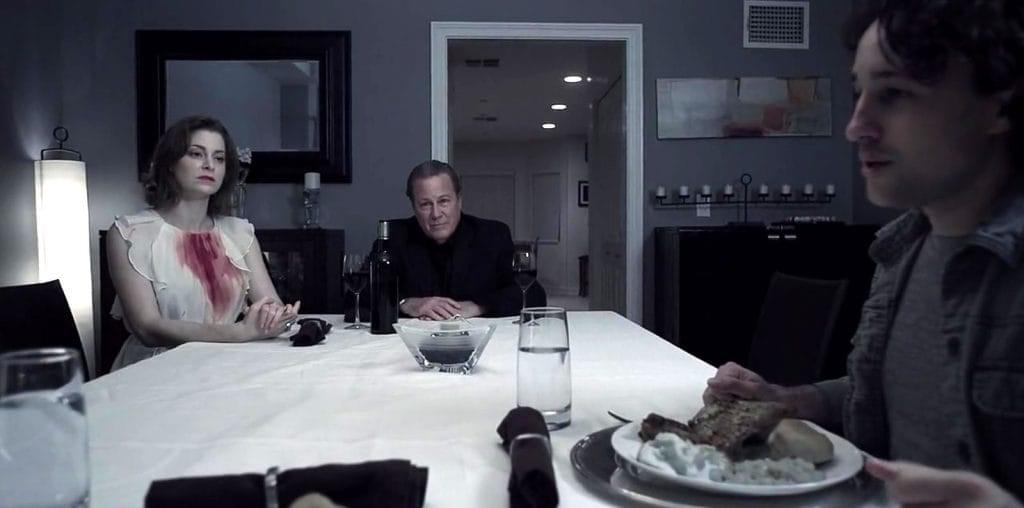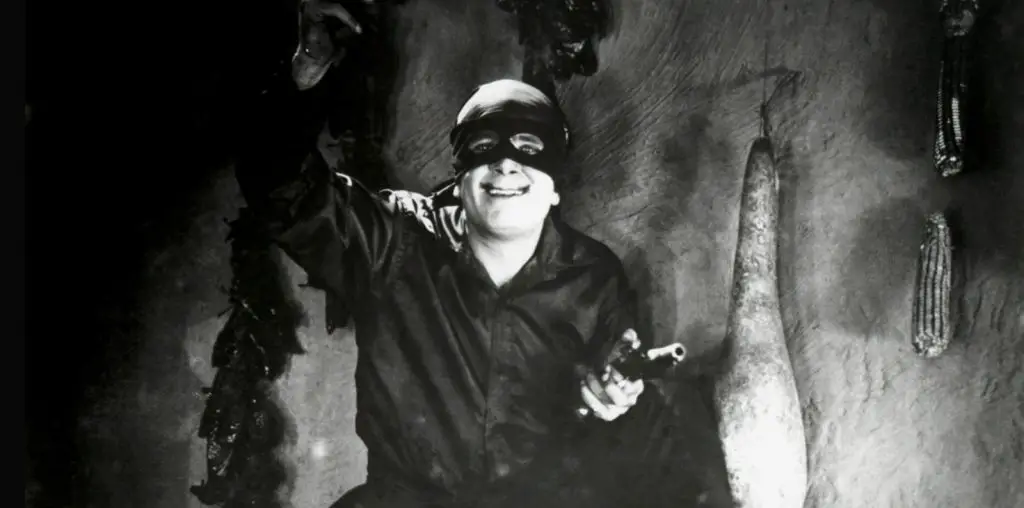
BOOTLEG FILES 245: “A Corny Concerto” (1943 Warner Bros. cartoon classic).
LAST SEEN: It is available on many online sites.
AMERICAN HOME VIDEO: On too many low-rent public domain labels.
REASON FOR BOOTLEG STATUS: A lapsed copyright.
CHANCES OF SEEING A COMMERCIAL DVD RELEASE: A pristine copy is available on the “Looney Tunes Golden Collection: Volume 2″ DVD set – and on endless bootleg DVD labels, too!
I recently attended a lecture featuring the conductor of a major symphony in the northeastern United States. The subject of the discussion was a composition by Liszt, and the maestro was detailing the various movements that Liszt created. When it was obvious that most of the audience was clueless to the composition in question, the maestro reminded his audience that this particular piece was once popularized in a Bugs Bunny cartoon – and that received a sudden wave of unanimous audience recognition.
Let’s face it – several generations of movie addicts were introduced to classical music and opera via the Warner Bros. cartoons. It is not necessarily a bad thing – unless you believe it is inappropriate to spice Wagnerian opera with a libretto that offers the refrain “Kill the wabbit! Kill the wabbit!” But if anything, the mix of lowbrow animation with highbrow music wasn’t toxic. The Warner Bros. cartoons never denigrated the concept of classic music and opera – it actually made it the music accessible to those who either had no access to it or who mistakenly believed it was dull.
“A Corny Concerto” is a landmark cartoon at many levels. Not only does it bring the Johann Strauss’ compositions into the realm of animated comedy, but it also elevates the Merrie Melodies knockabout to a higher intellectual level. From a historical perspective, it also offered the first broadside attack by the feisty Warner Bros. animators at the gold standard Disney studio.
“A Corny Concerto” is a blatant parody of Disney’s “Fantasia,” and it offered a very rare open assault by Warner Bros. on the Disney product line. “Fantasia” occupied a difficult position in the early 1940s – Disney clearly saw it as a vehicle for elevating animation to a higher artistic level. But the film was far ahead of its time – the notion of a serious animated feature with imagery linked to classical music baffled many critics and alienated audiences who only saw animation as diversion. The film was a commercial failure in its initial release, although it eventually earned back its cost in later re-releases.
With “A Corny Concerto,” the upstart Warner Bros. animation unit (which never had the studio approval to make a feature-length film) had fun with what was perceived as the pretensions of “Fantasia.” The most obvious target was the presence of music critic Deems Taylor as the film’s on-screen host. Taylor came across as a very serious intellect – his polished demeanor, crisp voice and trademark circular eyeglasses gave the message of a major cerebral power.
In “A Corny Concerto,” Taylor’s role was taken by Elmer Fudd. While the circular eyeglasses were in place, poor little Elmer was no one’s idea of Deems Taylor. Cursed with a rebellious tuxedo that repeatedly humiliated him, a pronounced speech impediment that made every pronouncement hopelessly ridiculous and a nervous laugh that barely covered his endless humliations, Elmer was the ultimate goof on highbrow aspirations.
(For the record, it needs to be stated that the celebrated Mel Blanc was not the voice of Elmer Fudd for the majority of the classic Warner Bros. cartoons. That credit belongs to Arthur Q. Bryan, who never received on-screen credit for his contributions to the classic cartoons. Blanc’s contract required him to receive screen credit for his work, but Bryan did not have that clause in his contract and is thus unknown to all but the most rabid animation fans.)
“A Corny Concerto” begins with Elmer’s tortured introduction to Johann Strauss’ “Tales of the Vienna Woods” (which is not helped by a starched tuxedo shirt front that keeps rolling up into his face). We then launch into a highly unusual offering featuring Bugs Bunny being hunted by Porky Pig and a nameless canine character. Much of the slapstick is obvious – Bugs slams the dog’s nose in a book and ties the animal’s tail to a tree. But there is plenty of strange stuff to be found here. Among the oddities: Porky assumes the hunter role that Elmer usually occupied, there is no dialogue outside of a gibberish rant by a squirrel who is konked by a rifle (making this the only mimed Bugs Bunny cartoon) and the segment concludes with a blatant transvestite gag where a brassiere-wearing Bugs screams after having his (covered) breasts exposed by Porky (this is pretty risque stuff for a cartoon – especially with Bugs getting revenge by tying Porky and the dog’s heads together with a bra before dancing off into the horizon).
After this, Elmer returns to introduce “The Blue Danube” – while his pants rebel and fall down to his ankles. “The Blue Danube” is one of the most beloved Warner Bros. creations of all time. A tiny black duck, who looks like (but does not act like) a miniature Daffy Duck, tries in vain to ingratiate himself with the white waterfowl. Yet he finally gains acceptance by successfully fending off and killing (via a large canister of TNT) a rapacious buzzard with a taste for baby swans.
What makes “A Corny Concerto” is that all of the gags are perfectly timed to the classical Strauss music. “Tales of the Vienna Woods” coincides the melodies with seemingly benign and inane routines (a dog sniffing the ground, the remains of a gnawed carrot being tossed in a trash can), while “The Blue Danube” is enhanced with Strauss’ music performed by swans who quack along in perfect harmony. The cartoon does not make fun of the music, but rather it has fun with the music – and that is a huge difference. “A Corny Concerto” never denigrates its source material, but rather it keeps the melodic reverence while working irreverent humor into its paces.
“A Corny Concerto” is also an exquisitely produced cartoon. The background artwork, particularly in “The Blue Danube” segment, is among the most lush creations from the Warner Bros. artists. The high quality also helps hammer home the “Fantasia” spoof – this is not a shabby riff, but a genuine equal to Disney’s vision.
For no clear reason, “A Corny Concerto” had its copyright lapse into the public domain. Over the years, countless bad dupes have circulated on low-rent video and DVD labels, and now it is all over the Internet. However, the most pristine copy can be found on the “Looney Tunes Golden Collection: Volume 2″ DVD set.
“A Corny Concerto” is a wonderful cartoon. Whether you see the fine official version or the shabby bootlegs, it doesn’t really matter – its brilliance continues to resonate with each new screening. Or as Elmer said: Isn’t that wuvwy?
IMPORTANT NOTICE: The unauthorized duplication and distribution of copyright-protected material, either for crass commercial purposes or profit-free s***s and giggles, is not something that the entertainment industry appreciates. On occasion, law enforcement personnel boost their arrest quotas by collaring cheery cinephiles engaged in such activities. So if you are going to copy and distribute bootleg videos and DVDs, a word to the wise: don’t get caught. Oddly, the purchase and ownership of bootleg videos is perfectly legal. Go figure

